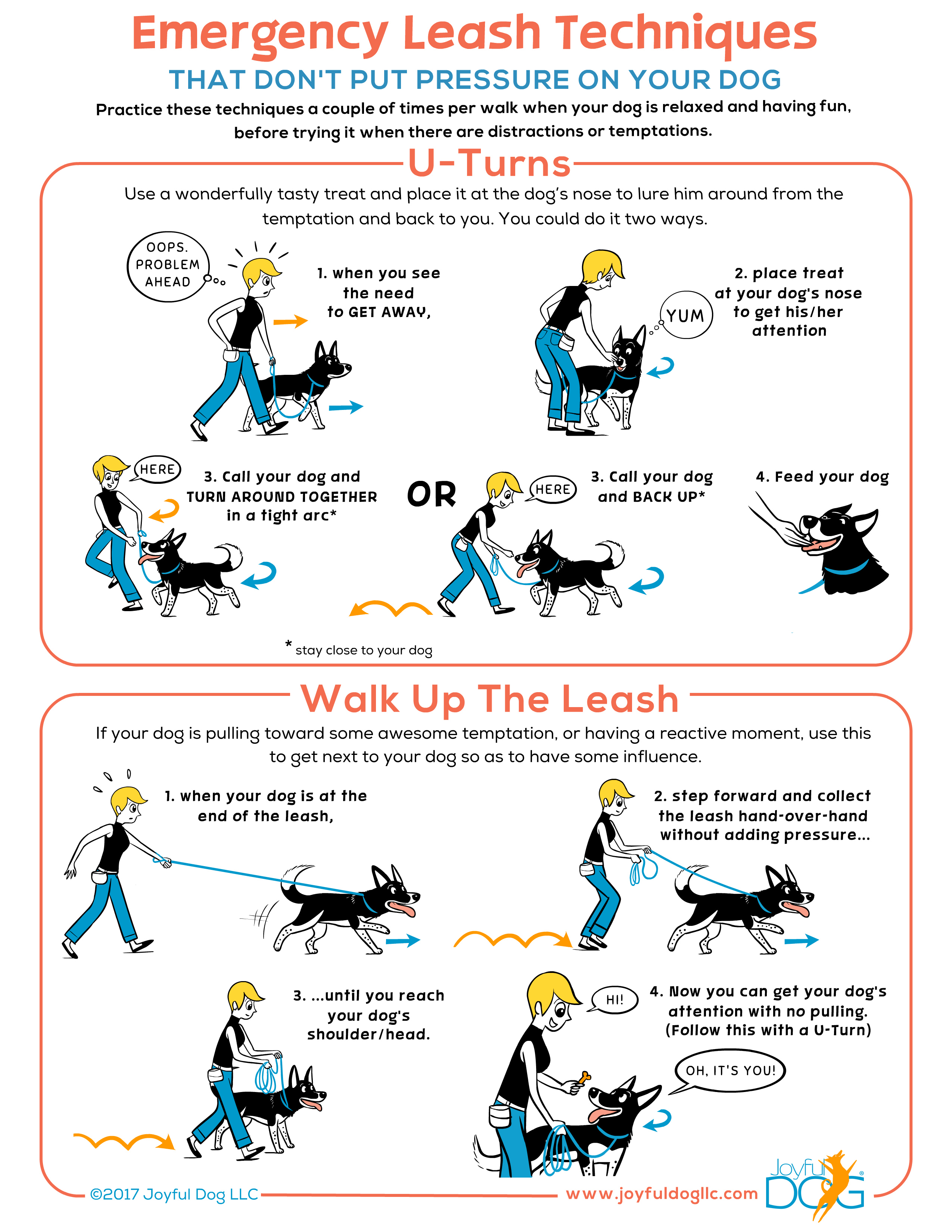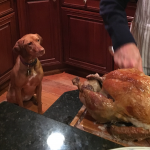Emergency Leash Techniques
In a perfect world a walk with your dog would be like strolling hand-in-hand with a dear friend. A signal on the leash invites Fido to be easy at your side on the way to the park, and a signal from Fido encourages you to join him in following the morning’s scent trails. Most of the time the leash is loose between you, and light in your hand.
The foundation for this kind of connection lies in building a habit of attention and engagement between you and your dog. Reinforce your dog for choosing to check in throughout your day, and remember that if we ask our dogs to attend to us, it’s only polite (and a good training strategy, too!) for us to return the favor.
All of our Joyful Dog classes include attention games of one sort or another, whether simply rewarding our dogs for choosing to check in, or more structured games such as our version of Leslie McDevitt’s “Ping Pong” game, in which our dogs practice voluntary eye contact between increasingly wide laps of movement.
Even with the best of foundations, though, sometimes things happen. Your spaniel sees a bird who needs flushing, and races to the end of her leash. Your reactive dog sees a canine intruder from two blocks away, and rushes forward to sound a warning. Your dog has temporarily misplaced awareness of you, so you need to get back on the radar.
Two simple techniques can help. As with most training, it’s best to practice these with your dog before you find yourself in the emergency situation.
U-Turn
- When your dog’s attention is focused elsewhere, take a smelly, tasty, treat and place it at her nose, for her to sniff and follow.
- Using the food lure, slowly guide her nose back toward you so that she makes a U-Turn.
- Continue to move backwards with the treat guiding her nose, then turn and walk side-by-side together.
- Now feed her the treat, or toss it ahead a little bit to keep her moving with you.
Walk Up the Leash
If your dog is six feet ahead of you, warding off an intruder or stalking its prey at the other end of a tight leash, it’s unlikely that you’ll be able to do a U-Turn, or have any other influence for that matter. You need to place yourself by his shoulder or head first. If you simply walk forward, though, your dog will continue to pull forward. If you try pulling back on the leash it will prompt your dog to pull harder (a physical reflex—not the “stubbornness” so often attributed, incorrectly, to our dogs). You need to “walk up the leash”.
- Walk toward your dog without releasing the pressure that he has put on the leash.
- As you approach him, gather up the leash, hand over hand, so that you neither release nor add to the pressure on the leash.
- Once you arrive at your dog’s shoulder it’s likely that he will look around as if to say “Oh! I’d forgotten you were back there!”
- Perform a U-Turn, and move away from whatever had caught his attention, using food lures to keep him connected as you move away together.
We’re thrilled that artist Lili Chin has designed the poster above for Joyful Dog, in which she demonstrates the steps to performing a U-Turn, and Walking Up the Leash. Her illustrations make the steps of this simple but powerful technique very clear.
ADDITIONAL RESOURCES
Emergency Leash Technique Poster:
We’re happy to make the poster available here for your personal use. If you in turn share it with others, you must not alter it in any way, and must use it in its entirety, including the Joyful Dog copyright, logo, and contact information. Thank you!
Lili Chin’s Doggie Drawings:
Lili Chin has created a number of infographics and other illustrations with great information about force-free dog training methods. Visit her website here.
Leslie McDevitt’s Pattern Games:
Leslie McDevitt has put out a DVD with some simple and effective games for strengthening connections with our dogs, particularly for dogs with challenges.
Joyful Dog’s Attention Games Flyer:
Download our flyer on games for building attention.




